15+ SAMPLE Design Quality Control Plan
-
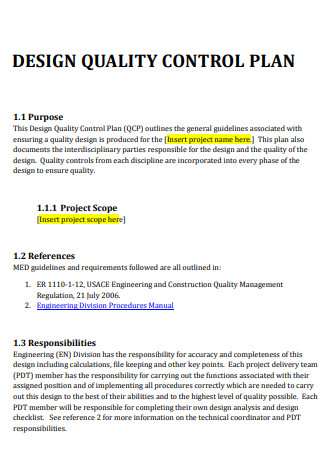
Design Quality Control Plan
download now -
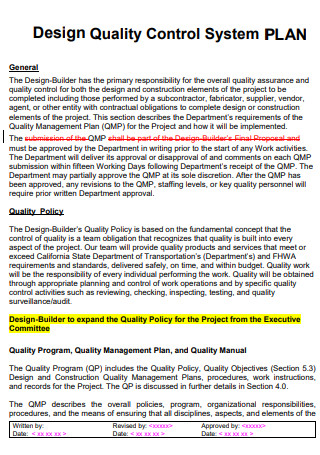
Design Quality Control System Plan
download now -
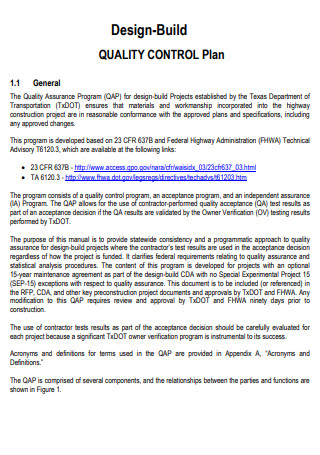
Design Build Quality Control Plan
download now -
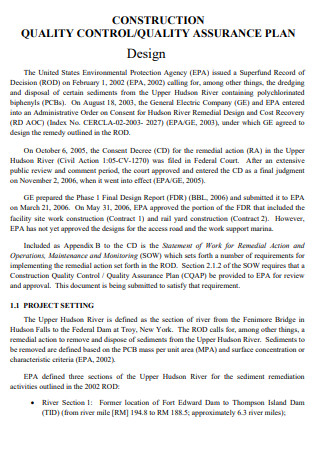
Construction Design Quality Control Plan
download now -
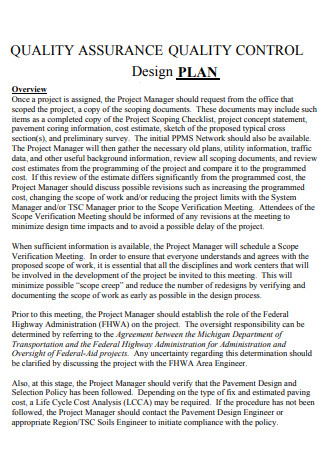
Design Quality Control And Assurance Plan
download now -
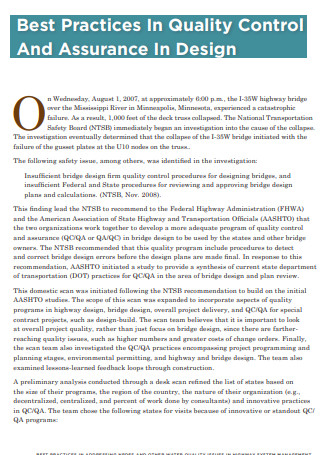
Sample Design Quality Control Plan
download now -
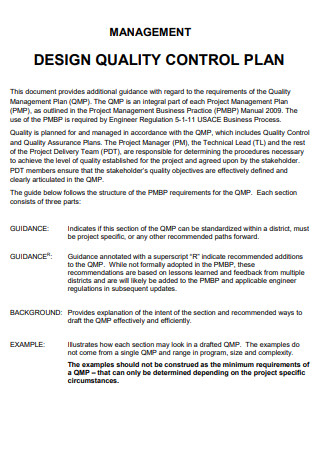
Design Quality Control Management Plan
download now -
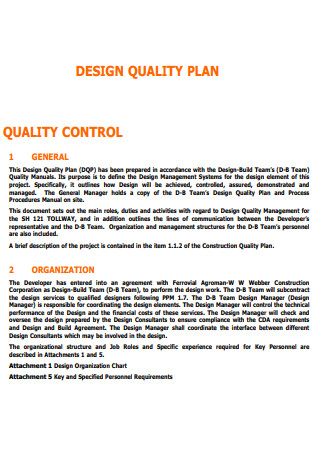
Design Quality Control Technical Plan
download now -
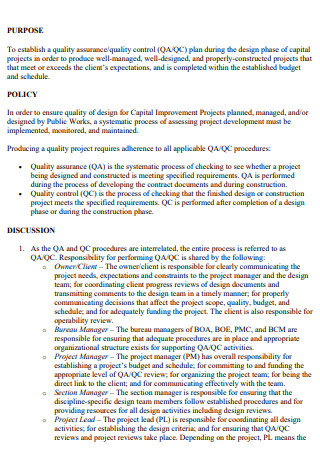
Simple Design Quality Control Plan
download now -
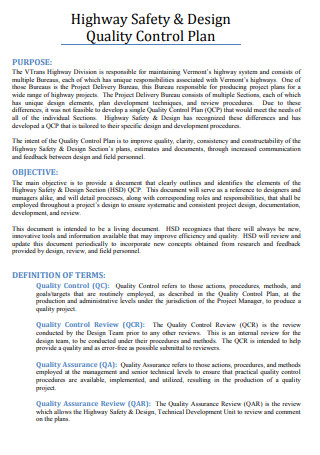
Highway Safety Design Quality Control Plan
download now -

Engineering Design Quality Control Plan
download now -
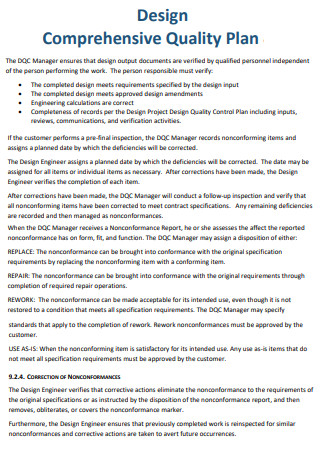
Design Comprehensive Quality Control Plan
download now -
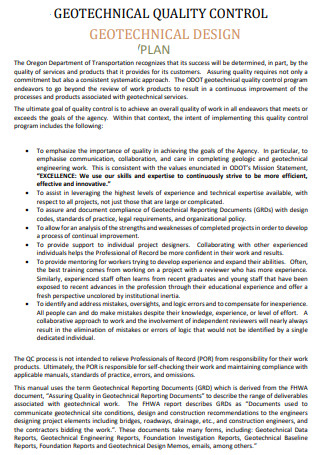
Geotechnical Design Quality Control Plan
download now -
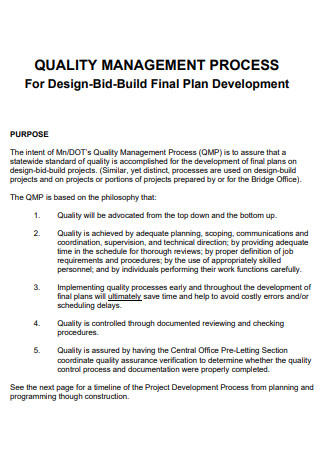
Design Bid Quality Control Plan
download now -
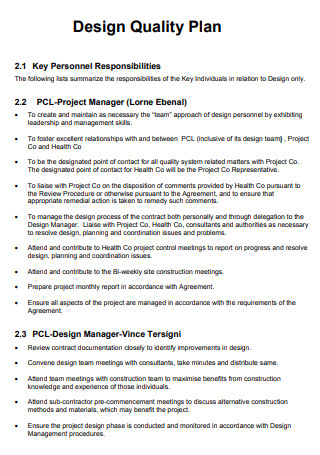
Design Quality Control Plan Example
download now -
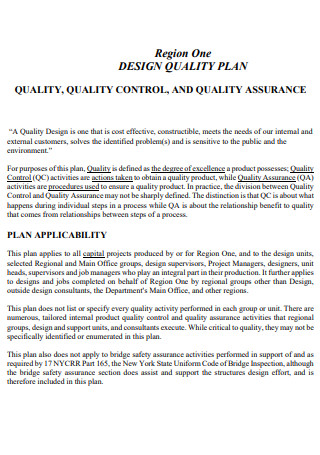
Design Quality Control Plan Template
download now
FREE Design Quality Control Plan s to Download
15+ SAMPLE Design Quality Control Plan
What Is a Design Quality Control Plan?
What Are the Elements of a Quality Control Plan?
Various Methods or Tools For Measuring Quality
Step by Step Process in Creating an Effective Design Quality Control Plan
FAQs
What is the difference between internal quality control and external quality control?
What is the difference between Quality Assurance and Quality Control?
What is a Quality Management System?
What Is a Design Quality Control Plan?
Before we get to know about what a design quality control plan is, perhaps it would be appropriate to familiarize ourselves with quality control first. By definition, quality control refers to the activities of implementing, monitoring, and continuously improving processes to ensure the delivery of quality products, services, and information. Quality control activities include making clear decisions and giving clear directions, constantly supervising by experienced individuals, immediately reviewing completed activities for accuracy and completeness, and accurately documenting all decisions, assumptions, and recommendations.
A design quality control plan is a business document that outlines the general guidelines that are associated with ensuring that a quality design is produced for a particular project. In other words, it is a written set of procedures and activities aimed at delivering products that meet the quality objectives stated in contract documents as well as other procedures, manuals, and guidance. It will also identify the organization or individuals in charge of quality control, as well as the specific procedures used to ensure the delivery of a high-quality product. This document also outlines quality assurance measures, as well as the method of accountability and documentation required.
What Are the Elements of a Quality Control Plan?
A simple but effective quality control plan should have the following elements in place; take note that some specific elements can be present depending on the type of quality control plan being made.
Various Methods or Tools For Measuring Quality
Here are the different techniques that are implemented during quality control:
- Inspection – Inspection is an important part of measuring quality, and random product testing can be an effective technique for small operations. Statistical sampling, a method based on mathematics and probability science, is best suited for high-volume production where there are enough samples to compare to the whole. This type of inspection can be performed using a variety of software programs and other tools. The product can also be evaluated to see if it meets predetermined criteria, such as going over a checklist of required functions and physical characteristics.
- Testing – Failure testing is one type of product testing in which the product is tested to its limits and beyond to determine where it will stop functioning as intended. These typically include emphasizing the product’s mechanical properties such as material strength, elasticity, and impact resistance. Vibration and temperature tests may also be performed. The product, its use, and the business’s time and financial constraints all influence which tests are used.
- Process Control and Ownership – Everyone who is involved in the product’s manufacturing or service delivery should be encouraged to take ownership of a portion of the process. Businesses can take this concept a step further by incorporating quality control throughout the entire organization. Employees will take more pride in their work and strive for a successful outcome to the job for which they are responsible if they are given more responsibility. Managers, employees, and vendors must make firm commitments to deliver on time and meet certain milestones. A project manager can keep an eye on the process flow and ensure that all parties involved are on the same page and that deadlines are met or that the process is running smoothly. Large-scale operations typically rely on software tools that employ various statistical process control methods.
- Control Charts – Charts can be a useful tool for assessing the quality of your product. The number of characteristics to be measured determines whether you use the two basic types of statistical charts, univariate or multivariate. When multiple characteristics must be evaluated, a univariate chart is used. A multivariate chart is used when multiple characteristics must be evaluated. Trend charts, Pareto bar charts that allow you to prioritize quality improvements, and a scatter diagram that can show the relationship between an actual product and the standard are other types of charts that can be useful.
Step by Step Process in Creating an Effective Design Quality Control Plan
An effective design quality control plan will streamline the process of a company’s quality assurance procedure by defining clear protocols, defining employee duties, and their potential responses. With that being said, here are the steps to be taken in creating a design quality control plan.
-
1. Create an Organization Chart
In this step, the management should first sketch out an Organizational Chart that includes job descriptions, business qualifications, and the various types of training needed to carry out each quality assurance procedure. These requirements must be documented in order to demonstrate that employees conducting inspections are properly trained and qualified. This document should be kept on file so that it can be shown to upper management if there are any concerns or errors.
-
2. Outline Responsibilities
The management must define the responsibilities of internal employees and external affiliates. Each party should be aware of the processes for which they are responsible and who will be responsible for quality control.
While some small businesses allow employees to quality check and verify their own work, these procedures are usually performed separately by staff members. This necessitates separate documentation to ensure that adequate time was allotted to each task, as multitasking can lead to increased human error.
On the other hand, large-scale companies prefer different employees within the same department to double-check their coworkers’ work. These quality assurance specifications should be clearly defined in order to avoid confusion and ensure that each step is carried out correctly.
-
3. Purchase and Acquire Materials
Management should understand the specifications before ordering components that meet the desired quality standards. While finding the Cheapest Vendors may save companies money, it may fall short of their quality assurance standards. As a result, before beginning the ordering process, it is critical to define the key characteristics of materials. Employees should inspect the shipment once the materials have been delivered to ensure that all products are up to standard. If the delivery falls short of the expected quality level, the company should return the items to the supplier.
-
4. Verify the Qualifications of the Supplier
While inspecting raw materials is relatively simple, performing quality assurance on more complex components and equipment can be difficult. As a result, before submitting a bid, businesses should specify their requirements and standards for vendors. Businesses, for example, may require a third-party audit of a vendor to ensure that their internal processes comply with regulations. Then, before finalizing a contract, organizations should assess potential suppliers’ reputation, brand, and qualifications.
-
5. Evaluate Feedback
While the goal of quality assurance is to ensure that products are up to standard before they are presented to customers, feedback is an excellent tool for improving quality and item performance. Companies can identify a product’s strengths and weaknesses by investigating online reviews, user complaints, and suggestions. Organizations should establish an effective Customer Service team that compares reviews to compliance records to determine whether malfunctions were caused by noncompliance. If an employee discovers a non-compliant process, they must report it.
-
6. Develop Processes for Corrective Action
In the last step, businesses must develop a Corrective Action Plan to address quality issues such as violations and noncompliance. When a non-compliant process is reported, the employee in charge of quality control must determine how the problem arose. It could be due to a malfunction or worker negligence. Once the root cause has been identified, the company must put in place a solution to prevent the event from happening again. Additional quality checks or automated software, such as inventory ordering solutions, could be included.
FAQs
What is the difference between internal quality control and external quality control?
Internal quality control refers to the process of developing an in-house protocol for testing your system. It can range from routine equipment inspection to having a coworker review another employee’s data analysis or running standards and controls on a regular basis. It is generally up to the management of the company to determine whether internal quality control measures are reliable and are carried out as required.
External quality control occurs when products or data are sent to a business that is not affiliated with your company. Food production is one example of external quality control. A food company may routinely analyze the nutritional value or shelf life of a food item it produces in its own lab, but the same food item will also be sent to an outside lab for verification.
What is the difference between Quality Assurance and Quality Control?
Quality assurance is a component of quality management that focuses on providing assurance that quality requirements will be met. Quality assurance provides confidence to management on two levels: internally and externally to customers, government agencies, regulators, certifiers, and third parties. It is also defined as all planned and systematic activities carried out within the quality system that can be demonstrated to provide confidence that a product or service will meet quality requirements.
On the other hand, quality control is a component of quality management that focuses on meeting quality requirements. While quality assurance is concerned with how a process or product is carried out, quality control is concerned with the inspection aspect of quality management. It is also known as the operational techniques and activities used to meet quality requirements.
What is a Quality Management System?
A quality management system (QMS) refers to a formalized system for documenting processes, procedures, and responsibilities for meeting quality policies and objectives. A quality management system (QMS) aids in the coordination and direction of an organization’s activities in order to meet customer and regulatory requirements while also continuously improving its effectiveness and efficiency.
With an effective quality control plan, a business or a company can ensure that all the products that they manufacture will meet the high standards that are to be expected and the different kinds of corrective measures that are in place to address various consumer concerns. Having a quality control plan in place will also show the customers that the company values the feedback that they’ve given and in turn will always push to provide their best possible products on the market. In this article, examples of an effective design quality control plan are posted so that you can download them and use them as a personal reference in case you need to make one for your company.
